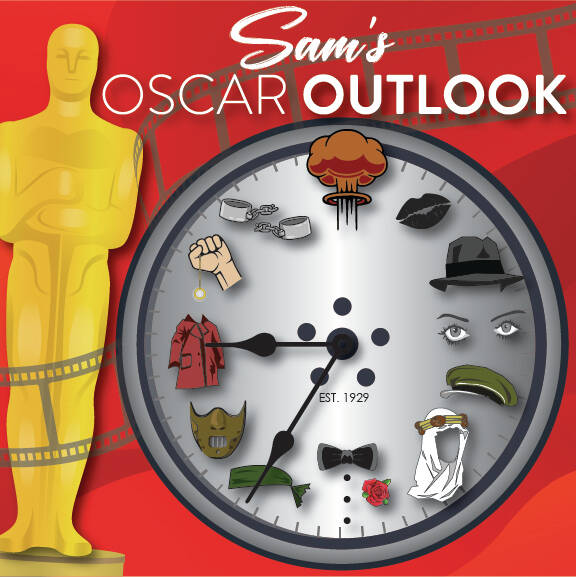In this eleventh part of my retrospective Oscar Outlook, I’ll be eliminating five films with big cinematic appeal, and a small scale classic that made a legend of its budding star.
38. “Ben-Hur” (1959)
My favorite Jesus is “Ben-Hur” Jesus. There’s a lot to sift through in this epic of epics, which runs over three hours. It’s not a simple watch, but Charlton Heston delivers the best performance of his career to carry us through. Truly, the Jesus-adjacent moments are the best pieces of the film — even superior to the iconic chariot race scene. It’s the rare film that gets better the more religious it gets. William Wyler directed a huge film, and, yes, a flawed one. But a bold vision was realized.
37. “On the Waterfront” (1954)
Marlon Brando’s first Oscar-winning role came for “On the Waterfront,” a film that I respect more than I like. Truly, the screen acting form was remade by Brando’s method in movies like this and “A Streetcar Named Desire.” Beneath the lead performance is an interesting narrative about reclaiming lost potential. It’s a bit of its time aesthetically, though I suppose every film is. To twist that as a positive, it serves as an important time capsule, away from the deceptive image of a pleasant, familial post-war era.
36. “Gladiator” (2000)
“Gladiator” was the first Best Picture winner of the 21st century, but it’s more akin to the winners of the 1990s. It attempts to capture a grand sense of scope, and I think it succeeds better than most of the films I’m broadly comparing it to. Maximus (played by Russell Crowe) is equipped with clear motivations throughout the picture, making him supremely sympathetic. Joaquin Phoenix plays a despicable weasel in Commodus, setting up a true good and evil dynamic. The tension between the two characters makes for a satisfying build, and an even more satisfying clash.
35. “Patton” (1970)
“Patton” goes way too easy on its subject character, and I think it borders on being a pro-war film. Cooler heads are meant to be the sticks in the mud, while Patton is the one getting things done, despite his unconventional tactics. Released during the Vietnam War era, it’s a confusing message. It leads me to question which strand of the Academy was rallying for it to win. Historical context aside, George C. Scott couldn’t be more perfect in the lead role, and the movie flies considering its above average runtime.
34. “Braveheart” (1995)
Mel Gibson is a difficult character, but I find his 1995 Best Picture winner “Braveheart” to be extremely entertaining. It makes a mockery of the facts, so this one is strictly for the cinema, not history classes. Nevertheless, the broad theme of freedom is viewed through a distinctly rah-rah lens, something that I think works out when the accompanying battle sequences are so well done. Gibson’s view of freedom is enthusiastic and lacking nuance (and is probably very different from my own), but he made a bombastic epic that knows exactly what it wants to drive home.
33. “Oliver!” (1968)
“Oliver!” has four great movie musical performances from Ron Moody, Jack Wild, Oliver Reed, and Shani Wallis. The Academy nominated two of those performances (Moody and Wild), while the other two were kept out of the Supporting Actor and Actress races, respectively. Likewise, “2001: A Space Odyssey” was wrongly left out of the Best Picture category, and it would’ve made for a top tier victor. Nevertheless, I’d do anything to have “Oliver!” and “2001” both earn their rightful flowers as quality films in very different ways.
Sam Zavada is counting down his ranking of every Best Picture winner in the history of the Academy Awards in the lead up to this year’s ceremony on March 2. Participate in the Times Leader Readers’ Ballot for the 97th Oscars by filling out the form at https://bit.ly/4hd8n6F. The Readers’ Ballot will close on Friday, Feb. 27, at 8 p.m. and will be revealed in the Saturday, March 1, edition of the Times Leader.
Sam Zavada is counting down his ranking of every Best Picture winner in the history of the Academy Awards in the lead up to this year’s ceremony on March 2.




